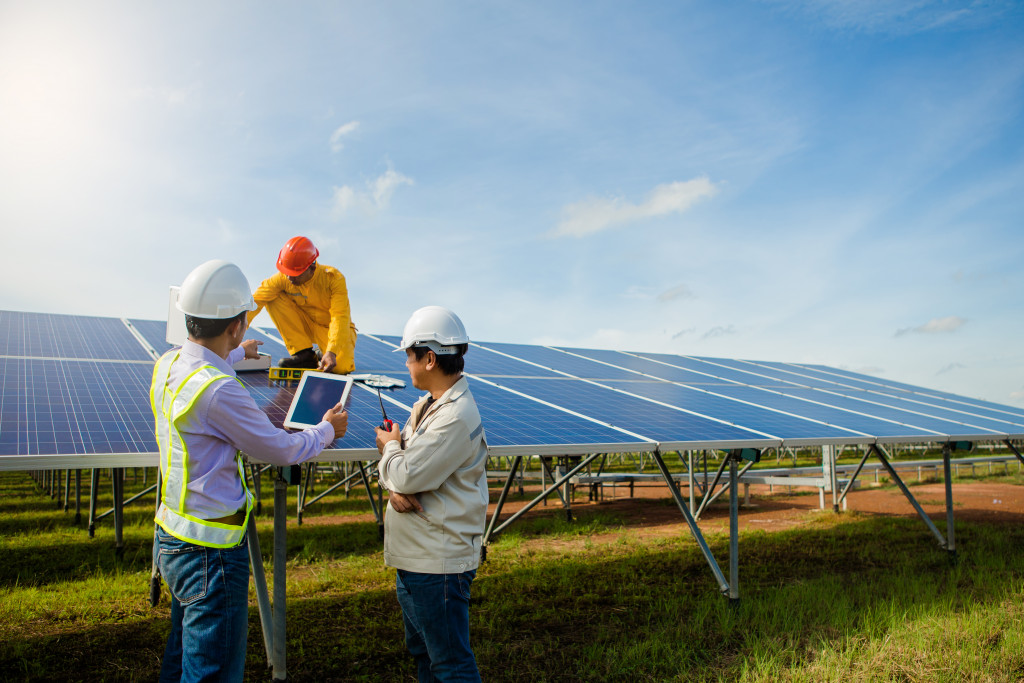People are increasingly making an effort to be kinder to the planet. After decades of unregulated greenhouse gas emissions and excessive use of disposable plastic, many are reigning in their consumption in an effort to slow down the effects of climate change and to save the environment from choking from garbage.
While recycling and using energy-efficient lighting are great ways to do your part, many people are taking it a step further by living green. Sustainability is the key here: reducing one’s carbon footprint while creating minimal waste that can be easily recycled. Going green means curbing unnecessary purchases and embracing sustainable solutions that don’t necessarily cost more.
Here are the top 5 things to consider when looking for a new eco-friendly home.
Live Somewhere Close to Work
People spend as much as an hour to go to work everyday. If they’re using their own vehicle, that’s a lot of fuel burned which contributes to air pollution and adds greenhouse gases to the atmosphere.
Transportation accounts for a third of all greenhouse gas emissions, so one would do well to live close enough to work that going by car is not necessary. Combine biking with mass transit and walking to minimize the time spent commuting in a day.
Another way to reduce your carbon footprint is to take advantage of public transportation.
Choose a House Appropriate to Your Needs
A big house is nice to have but it can be very wasteful. Keep in mind that heating and cooling a large home eats up a ton of energy every year, adding significantly to your carbon footprint.
Opt for a house that is suited to the number of people living in it. In most cases, people don’t really need a guest room unless they always have friends or family over. They don’t need a home office, either, if they work somewhere else for the whole week.
This way, you won’t be paying high energy bills and can easily maintain your home without losing money.
Look for Energy-Saving Features
It’s possible to build a house that has the capacity to reduce a household’s monthly power consumption. Before closing a sale, look for features that are added to decrease reliance of artificial lighting, heating, and cooling.
Start by looking for windows and skylights to allow natural light inside. These energy saving features make it possible to rely less on artificial lighting, cutting down billable hours that can be used elsewhere.
There are energy-saving windows that prevent heat from seeping out during the winter or that minimize the amount of heat entering the home during summer.
In the United Kingdom, homeowners are also required to submit Energy Performance Certificates (EPC) before selling or renting out a property to ensure the consumer that they’re making an informed choice. EPC provides details about typical energy costs and gives advice on how to reduce usage.
Opt for Materials with Less Emissions
Though it’s possible to use recycled materials in construction, some are not as good as others at reducing carbon footprint.
One example is steel, which emits a lot of greenhouse gases when being manufactured. Even though steel is the most commonly used material in construction, it’s best to look for an alternative.
Thankfully, there are natural materials that emit fewer greenhouse gases. Among these are wood and bamboo flooring, which use only half the carbon dioxide needed for manufacturing steel.
It’s also better for the environment to use recycled material. Even though steel has high carbon footprint, when recycled, it’s less wasteful and wouldn’t contribute toward worsening climate change.
Use Renewable Energy

Living green means using energy that is both clean and sustainable.
Solar panels can collect energy from the sun to power appliances and make heating and cooling systems more efficient. It should be an advantage when a listing already has solar panels installed which gives the next homeowners the option to power their home with clean energy and live with minimal carbon footprint.
In fact, the addition of solar panels is already known to increase the resale value of a home, showing that a lot of buyers are switching toward sustainability when it comes to electricity use.
Owning an eco-friendly home is a good start toward living green, but it’s important to make small changes everywhere you can. You can check for appliances that are energy-efficient and look for synthetic products with low impact on the environment.
A green home is not only good for the environment, but it can also be a wise investment. They use less energy, saving you money on your monthly power bills, and cut greenhouse gas emissions without compromising on comfort and style. If you’re looking to buy an eco-friendly home, keep these top 5 things in mind!

